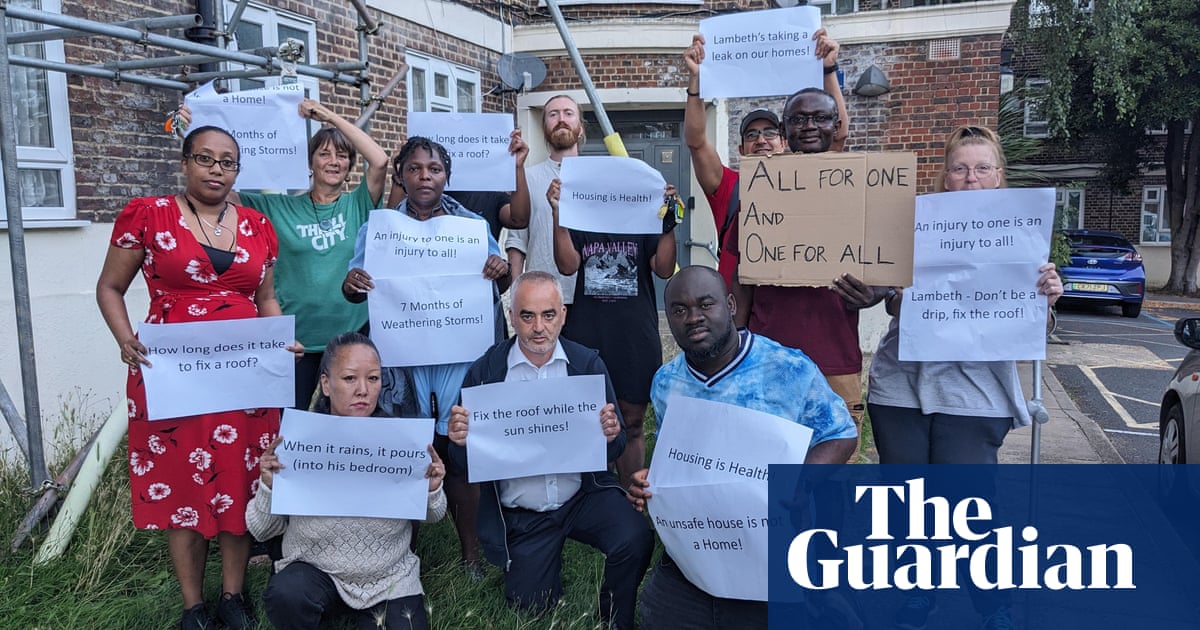
Nurses, teachers and post office workers are among those facing crippling fire-safety bills they believe could reach £85,000 each despite only owning a fraction of their homes.
The housing association Optivo this week told key workers in shared ownership properties in Oyster Court in Southwark, south London, that they faced a combined £2.6m bill to fix problems including combustible cladding, wooden balconies and missing firebreaks.
Because the five-storey building is under 18 metres (59ft) tall, none of the costs will be covered by the government’s £5bn bailout for high-rise towers with combustible cladding in the wake of the Grenfell Tower disaster.
Optivo said it believed the residents could qualify for government loans to cover the costs but it was still waiting for clarity. Ministers have said they plan to offer loans with a maximum repayment of £50 a month.
Residents of a neighbouring block built for private sale, with two-bedroom homes sold for £620,000, are likely to see the government fund their cladding works because it is taller than 18 metres.
Oyster Court is home to key workers and others who bought their properties on shared ownership schemes – but under the terms of their contracts they must pay all, rather than a share, of the remediation bill.
One charity worker who bought a 25% share in her home for £53,000 and faces a loss of over £20,000 said the bills were “devastating lives”. Emma McGovern, a teacher and mother of four who owns 45% of her home with a £120,000 mortgage, said: “It’s insane. I don’t know any teacher who has £85,000.”
It is the latest case in a growing building-safety crisis that Michael Gove, the secretary of state for levelling up, communities and housing, has been tasked with fixing.
On Tuesday, 120 households from a 22-storey social housing tower, Clare House in east London, were told they would be moved as a matter of urgency into temporary accommodation because it did not meet safety standards.
Clarion, the landlord of the 50-year-old block, said engineers had identified concerns about the fire resistance of its large panel system structure and it had a non-compliant external wall insulation system.
Clare Miller, the chief executive at Clarion, said: “This is not a decision we have taken lightly, but we will always prioritise our residents’ safety above all else. We have a comprehensive package of support for residents and there will be a round-the-clock waking watch in the building as we help people move out in an orderly fashion.”
On Wednesday, Gove met Kate Henderson, the chief executive of the National Housing Federation, to discuss building safety amid hopes he will protect leaseholders from costs which MPs have estimated at £15bn.
He is also tasked with finding a way to hold developers and freeholders responsible for faults that were created during construction. Gove is also under parliamentary pressure to protect leaseholders from Labour and more than 30 Tory rebels.
The residents of Oyster Court appear trapped in a wider dispute over how dangerous buildings such as theirs actually are. But building owners across England are pressing ahead with multimillion-pound works.
Denise Ramsey, 43, a charity worker who bought 25% of her Oyster Court flat with a £53,000 mortgage, said the bills were frightening. She wanted to sell, find a new home and start a family, but now cannot. “The clock is ticking,” she said.
Optivo said in a statement: “Our evidence shows work is required at Oyster Court to ensure residents’ safety … We completely understand the situation around fire remediation costs is continuing to cause concern for affected leaseholders, including our residents at Oyster Court.
“We empathise with the difficult position leaseholders find themselves in and we’ll continue to lobby the government to protect them from these costs.”












